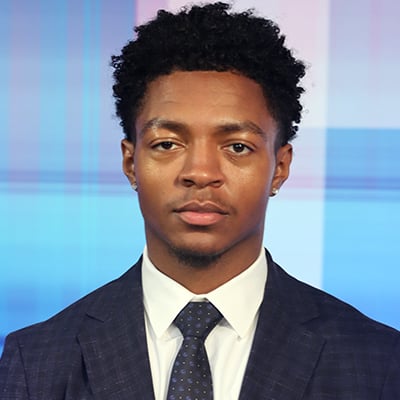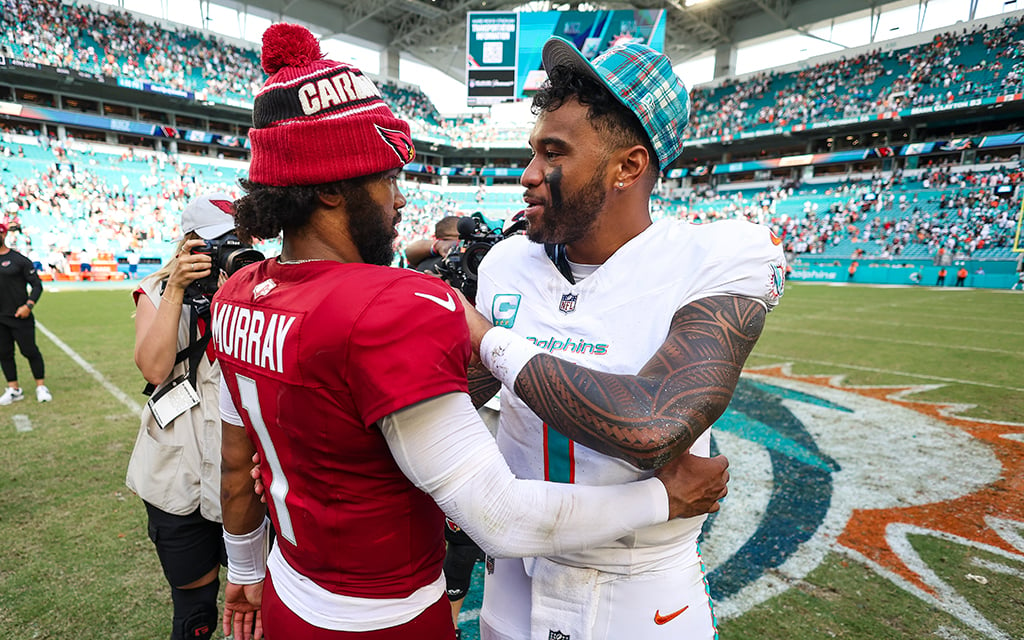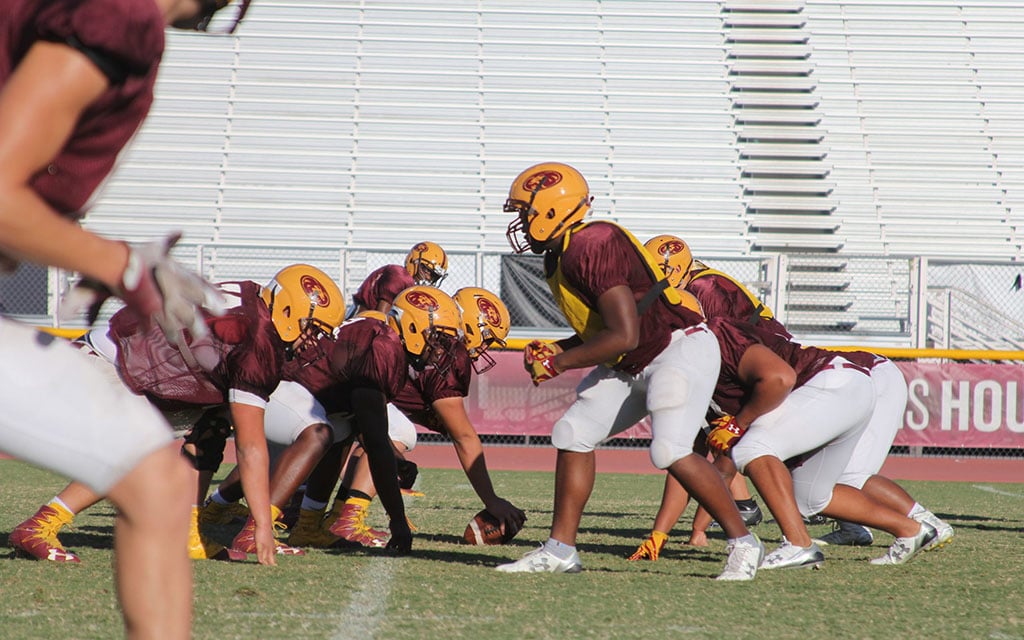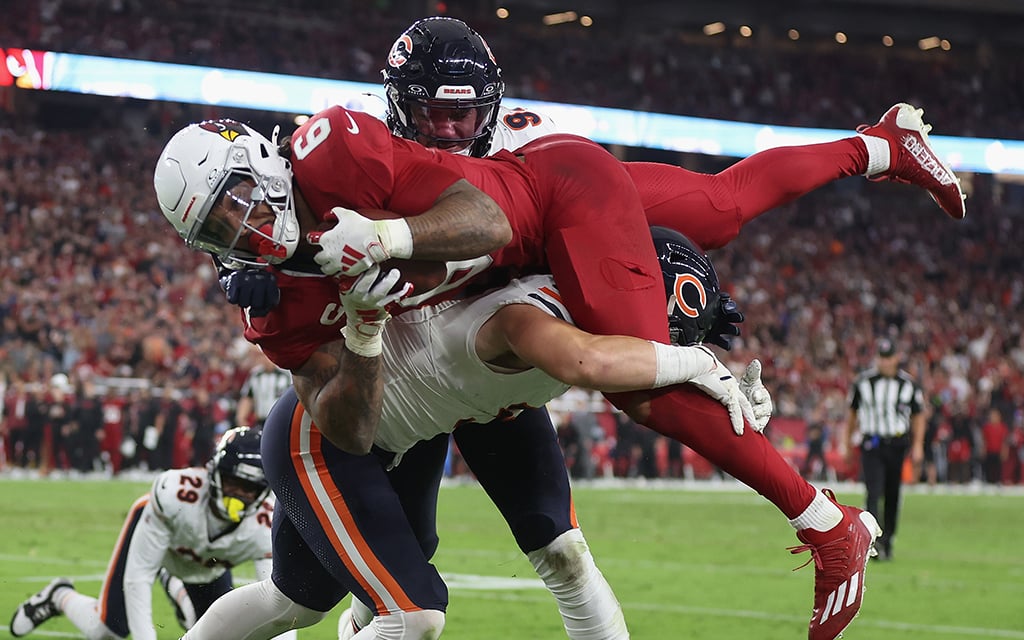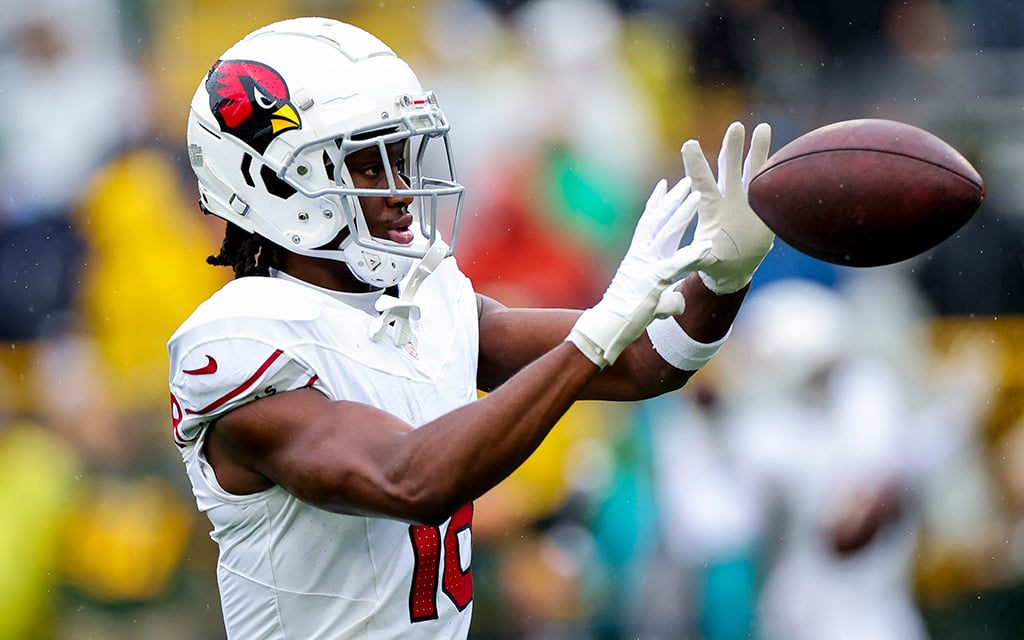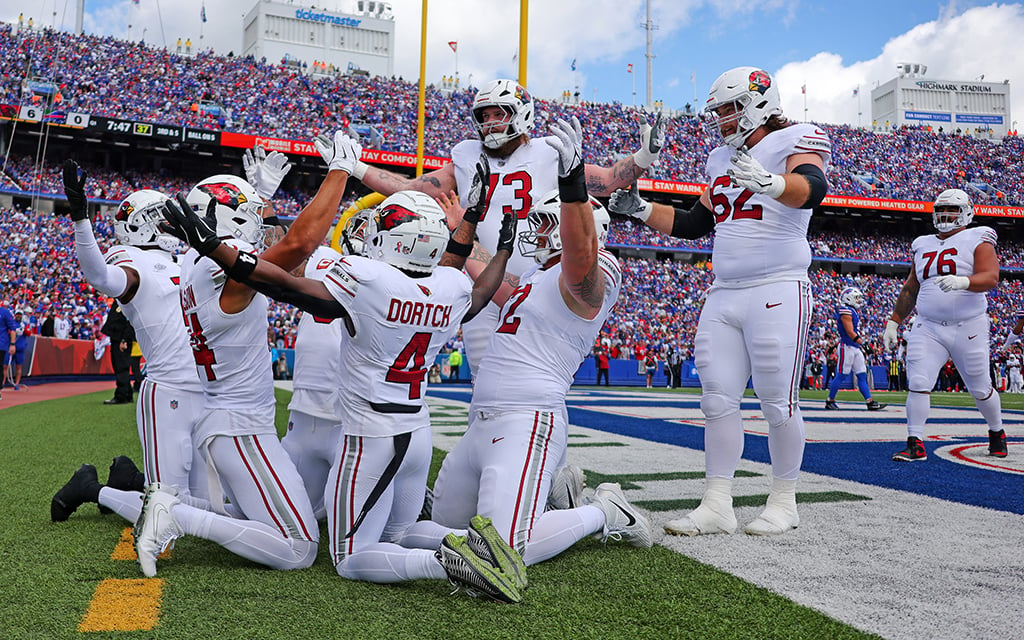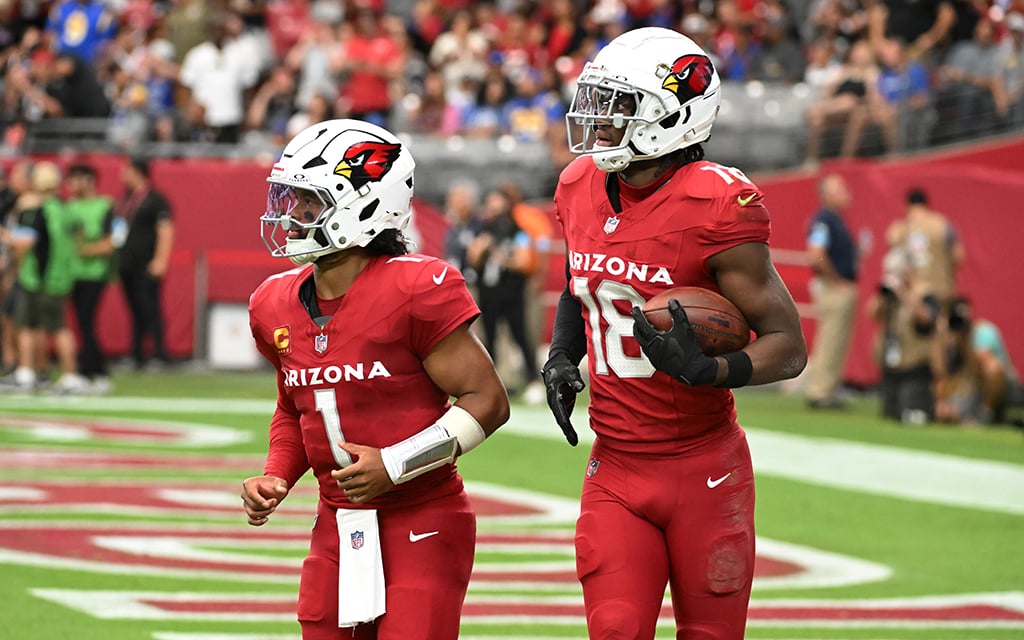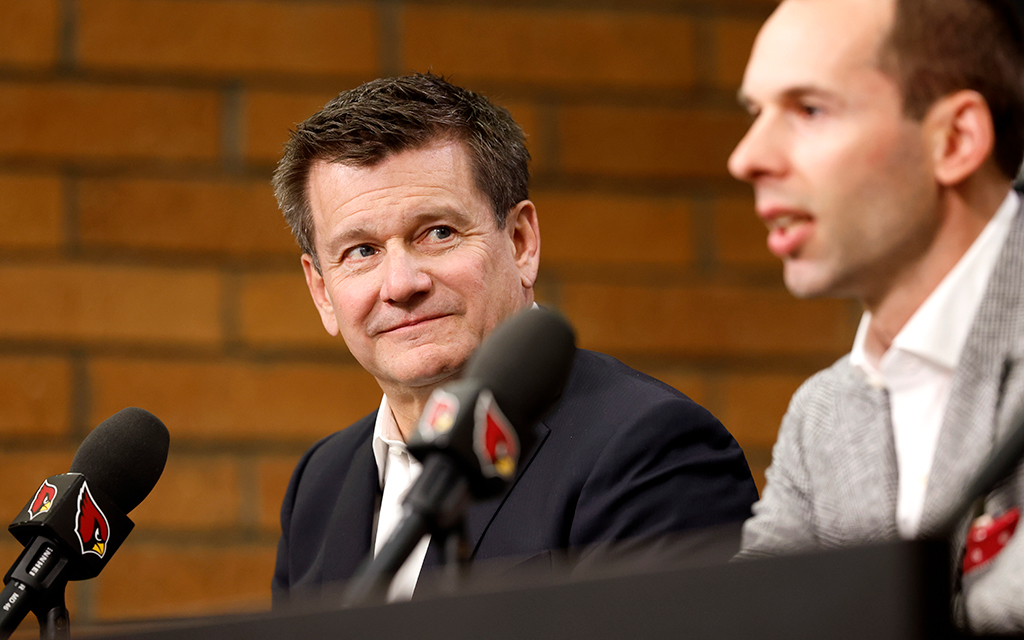PHOENIX – Tua Tagovailoa’s return to the field Sunday against the Arizona Cardinals wasn’t just a comeback; it was a calculated risk highlighting the realities of professional football. After sustaining three concussions, the Miami Dolphins quarterback played without wearing a guardian cap at Hard Rock Stadium after missing six weeks of action.
With multiple concussions under his belt, the question about the NFL’s safety protocols is still relevant. Is the NFL doing enough to protect the players it showcases every week?
There is no question Tagovailoa can still play, but his return has reignited conversations about whether the NFL is equipped to prevent serious head trauma, particularly for a star quarterback who has brought entire stadiums and homes to silence after showing signs of the fencing position.
For years, the NFL has received backlash for the game’s physicality and the effects players can face during their playing careers and post-retirement. Many players suffer concussions during their NFL tenure and deal with long-term symptoms and conditions, including chronic traumatic encephalopathy.
“If I was speaking to my son and he had a similar situation in terms of having multiple concussions, I’d have a very honest and loving conversation with him,” said Arizona State associate director and former NFL cornerback Kevin Miniefield. “I would advise him to stop playing the game. At some point, it comes to an end, whether it’s an injury or you’re just not good enough. I know he loves it, but life trumps the game of football. “
During the 2022 season, when Tagovailoa suffered two concussions, regular-season concussions rose by 18% across the league. Despite the increase, the NFL has taken action to make the game safer.
Several rules have been implemented, specifically by the NFL, to alleviate concussions and overall injuries. The NFL’s Competition Committee spearheads rule changes, reviewing the injury data at the end of each season and film to see the main reasons for each injury.
As a result of the committee’s research, the “Use of the Helmet” rule change was implemented after the NFL’s medical and engineering advisors suggested a high injury risk correlated with lowering the head to align with the neck and spine to make contact.
In 2018, new kickoff rules took effect and were made permanent for the 2019 season. The most notable change was the start position that required the kickoff team to have five players on each side of the ball and prevented it from lining up more than one yard from the restraining line.
During the 2015-17 seasons, 6% of plays in a game were kickoffs, yet 12% of concussions occurred on kickoffs. A player was four times more likely to get concussed during that play than on a run or pass.
The NFL then took its rule changes a step further ahead of this season, inspired by the United Football League’s kickoff. Since the beginning of this season, the kicking team’s players line up on the opposing 40-yard line while the receiving team’s players line up from the 35 and 30-yard line to reduce the speed of the play.
“I hate to say it, but back when I was a trainer, there were times where someone would come off the sideline, and they’d be shaking their head, not necessarily knowing where they’re at,” said Perry Edinger, a medical spotter for the NFL. “And you’d give them some smelling salts and have them sit out for a minute or two, and they go back in.
“Coaches, you know, barked in their ear that they’d have to toughen it out, and they just got their bell rung.”
In specific cases regarding the quarterback, the NFL implemented new rules that prevent defenders from landing on top of the quarterback and hitting him after the ball is released or tackling him below the knees.
However, the new rules haven’t proved to be effective.
“I guess there are some other elements of the game that they can do to protect quarterbacks,” Miniefield said. “But I mean, the way that the rules are constructed now, it’s difficult to have a physical sport the way that it is and really protect one aspect of the game. Guys are even now asked to move their body and not have their body weight fall on a quarterback, which jeopardizes yourself as well, as opposed to one individual.
“So honestly I think the NFL is doing a good job in terms of trying to protect folks, particularly at the quarterback position. When you’re dealing with human beings nothing is going to be perfect. They can continue to tweak rules, but I think they’re ahead of the game.”
The NFL has aimed to reduce the number of concussions in a single season, but the sport is inherently dangerous. Every game, Tagovailoa and NFL players risk their lives to play the game they love and provide for their families.
Since 2015, however, the NFL has seen a decrease in the number of players who have suffered concussions, although some seasons have produced slight increases or remained level.
During the preseason, there was a 24% decrease in players who suffered concussions from last year based on the NFL’s data tracking.
Medical spotters like Edinger are in the booth during an NFL game to observe each play in the game in real-time with multiple replays, evaluate what happened and look for players who may have been hit in the head or show signs of a concussion.
Some of the most prominent signs are a player who stands slowly, lays motionless, grabs their helmet and tries to shake it off, shows an unsteady gait, or, in Tagovailoa’s situation, displays the fencing posture.
“If they show those kinds of signs, then we have the ability to stop the game,” Edinger said. “Many times, referees observe these signs also, and those on the field will see it and get it wrapped up quickly. Sometimes, players even assist us with a teammate showing a negative sign, getting a referee’s attention. But our role as a medical spotter is to make sure that a player who shows these signs is not exposed to another play.”
The NFL takes precautionary measures to ensure the safety of every player who steps onto the field of play. The pressure that can weigh down a player to do his job is overbearing, making it challenging for the NFL to consistently measure how a player is feeling. Due to the once-in-a-lifetime opportunity to play professional football and the toughness within the sport, players can tend to play through injuries or rush their recovery process.
“Football is a great opportunity to do something you love doing,” said former NFL player Hines Ward, Arizona State’s wide receivers coach. “You get paid millions of dollars to do it. Unfortunately, it’s hard for me being a former player, but I understand the situation. When you come from nothing, and this is all you have, this is your window of opportunity to maximize the most money you’re probably ever going to make in a lifetime.
“At what cost do you do that?”
The NFL considers Tagovailoa’s VICIS ZERO2 MATRIX ID QB helmet the best for quarterbacks in reducing head-impact severity.
Allen Sills, one of the NFL’s chief medical doctors, says the NFL tagged this particular helmet design as Guardian Cap optional because laboratory tests didn’t show more of a benefit by adding it. A Guardian Cap is a soft shell helmet cover that NFL players can use in games to reduce the impact on their heads.
Based on medical and physical tests, Tagovailoa earned clearance to play the sport he desires, and doctors never recommended he retire or not return to play, as they believe he’s healthy enough mentally and physically.
Studies have shown that players with repeat concussions are more prone to future concussions, but Tagovailoa looks to remain healthy the rest of his NFL career.
“Everybody recovers from concussion differently,” Ward said. “So it’s hard to put a number on concussions. I just know there’s more research into it. To be able to get back on the field, you have to take some cognitive tests and things like that. So there are protocols in place to get the guys back, understanding, if you come back and you pass all your tests, then it’s okay to get back on the football field.”
